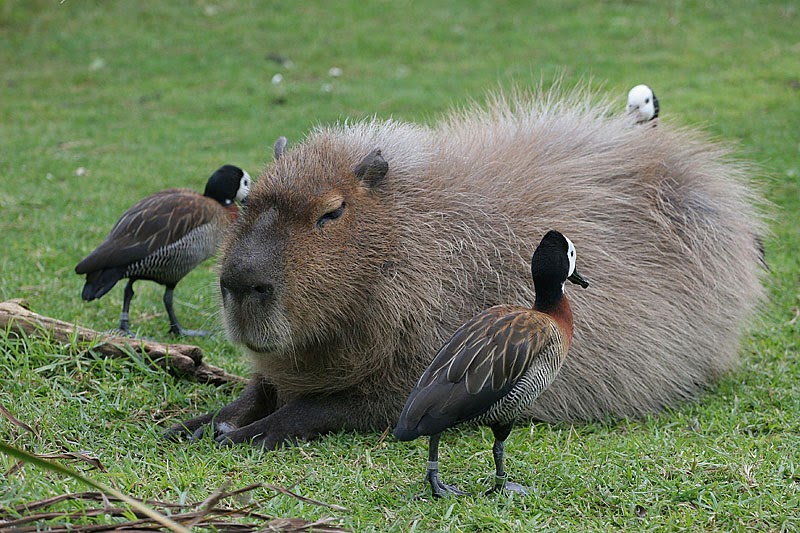When we think of rats, we often picture small, scrappy creatures scurrying through the alleys and streets of our cities. However, there exists a type of rat that defies this common perception – the largest kind of rat, known for its impressive size and unique characteristics. Understanding what is the biggest kind of rat not only sheds light on the diversity of rodent species but also captivates our curiosity about the natural world. The largest rat species is not just a mere curiosity; it plays a vital role in its ecosystem and has garnered attention due to its intriguing behaviors and adaptations.
Many often ask, "What is the biggest kind of rat?" The answer lies in the fascinating world of the *Capybara*, which is often mistaken for a rat due to its rodent classification. This remarkable creature can weigh up to 150 pounds and reach lengths of over four feet, making it the largest rodent in the world. While they aren't technically classified as "rats," their size and rodent lineage make them a point of interest for those curious about the animal kingdom. Understanding their habitats, social structures, and diets gives us insight into how such a large rodent thrives in the wild.
In this article, we will delve deeper into what is the biggest kind of rat, exploring its characteristics, habitat, and ecological significance. We will also address some common misconceptions and answer frequently asked questions about these remarkable creatures. So, let’s embark on this enlightening journey into the world of the largest rodent and learn about what makes it truly unique!
What is the Biggest Kind of Rat? An Overview
The biggest rat in the world is often acknowledged to be the *Capybara* (*Hydrochoerus hydrochaeris*). While they are not technically rats, they belong to the cavy family, which includes several species of rodents. The *Capybara* can reach lengths of up to 4.5 feet and weigh as much as 150 pounds. Their robust size and semi-aquatic lifestyle set them apart from the typical image of a rat.
Where Do Capybaras Live?
*Capybaras* are native to South America, primarily found in countries such as Brazil, Venezuela, Colombia, and Argentina. They thrive in habitats that provide plenty of water, such as rivers, lakes, and wetlands. The presence of water is crucial for their survival, as they are excellent swimmers and often submerge themselves to escape predators.
What Do Capybaras Eat?
These large rodents are herbivores, primarily feeding on grasses, aquatic plants, and fruits. Their diet consists mainly of:
- Grasses
- Leaves
- Fruits
- Water plants
Capybaras have a unique digestive system that allows them to break down tough plant fibers effectively, which is essential for their large size.
How Do Capybaras Socialize?
Capybaras are highly social animals that live in groups, which can range from 10 to 20 individuals. These groups typically consist of one dominant male, several females, and their offspring. Social interaction is vital for their survival, as it helps them protect against predators and ensures a stable food supply.
What Are the Predators of Capybaras?
Despite their size, *Capybaras* are preyed upon by various predators, including:
- Jaguars
- Caimans
- Giant snakes
- Humans
Their social behavior allows them to maintain vigilance against these threats, with sentinels watching for danger while the rest of the group feeds or rests.
How Do Capybaras Adapt to Their Environment?
Capybaras have several adaptations that help them thrive in their habitats:
- Webbed feet for swimming
- Thick fur that helps insulate them in water
- Highly developed senses for detecting danger
These adaptations not only aid in their survival but also contribute to their unique lifestyle as semi-aquatic rodents.
What Makes Capybaras Unique Among Rodents?
What sets *Capybaras* apart from other rodents is their size, social structure, and behavior. They are often seen lounging in the water or basking in the sun, displaying a calm and friendly demeanor that has made them popular in zoos and as exotic pets. Their gentle nature and social behavior have led to their reputation as the "gentle giants" of the rodent world.
Conclusion: What Have We Learned About the Biggest Kind of Rat?
In conclusion, understanding what is the biggest kind of rat reveals more than just the size of the *Capybara*. It opens a window into the complexities of rodent life, their ecological roles, and their importance in biodiversity. While they may not fit the traditional mold of what we envision when thinking of rats, *Capybaras* certainly hold a significant place in the animal kingdom. Their size, social structures, and unique adaptations make them a fascinating topic for anyone interested in wildlife and the natural world.
You Might Also Like
The Enigmatic World Of The Sacred RianaLoro Piana Loafers: The Pinnacle Of Italian Luxury Footwear
Sadam Channel 5 Guardian: The Emerging Influence In Media
Understanding The Conversion: 7inch To Cm
Unlocking The Secrets: How To Open A Ramune Drink
Article Recommendations
- Ari Melber Children
- John David Washington Wife
- Lana Del Rey Pregnant
- Unblockedgames76
- Halloweentown High 3
- Jenna Ortega Nude Fake
- Grace Charis Net Worth
- Tobias Menzies Wife
- Jenny Mcaethy
- Ali Peters


